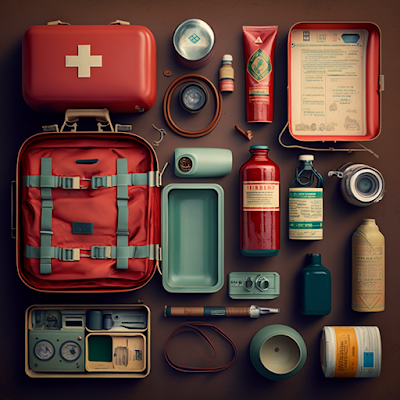Despite our constant vigilance and precaution, it is inevitable that
unexpected accidents occur in our daily lives. As human beings, we are exposed
to various situations that may require immediate intervention to provide
assistance. This could be due to household accidents such as falls or minor
injuries, road accidents, sports-related incidents, or even occupational
hazards.
In those critical moments, a quick and effective response is crucial to
ensure the safety of the injured and our peace of mind. This is where the
importance of first aid comes into play, encompassing the procedures and skills
delivered to the injured before professional medical care arrives. First aid
plays a prominent role in providing immediate and basic care to the injured,
helping to minimize harm and increase chances of survival.
First aid skills are vital for everyone, as they can make a critical difference
between life and death in certain situations. It is essential for everyone to
learn these basic first aid skills because at any given time, we may be the
ones in need of assistance or the first ones to provide aid in an emergency.
So, whether it's a minor accident or a more serious incident, having
knowledge of first aid can empower individuals to take swift action, provide
essential care, and potentially save lives.
When attempting to administer first aid
to an injured person, it is important to remember the following steps:
1.
Assess
the situation: Ensure that the area is safe for both you and the
injured person. If there are any immediate dangers, remove them if possible or
seek assistance.
2.
Call
for help: Contact emergency services or ask someone nearby to call for medical
assistance, especially in serious or life-threatening situations.
3.
Check
for responsiveness: Gently tap the person and ask if they are okay. If
there is no response, carefully turn the person onto their back, keeping their
neck and spine aligned.
4.
Open
the airway: Tilt the person's head back slightly, lifting their
chin forward. This helps to clear any obstruction and allows for proper
airflow.
5.
Check
for breathing: Look, listen, and feel for signs of breathing. Watch
for chest movements, listen for breath sounds, and feel for air on your cheek.
If the person is not breathing or only gasping, begin CPR immediately.
6.
Perform
CPR if needed: If the person is not breathing, start cardiopulmonary
resuscitation (CPR) by performing chest compressions and rescue breaths in the
recommended ratio until professional medical help arrives.
7.
Control
bleeding: If there is severe bleeding, apply direct pressure to the wound using
a clean cloth or your hand. Elevate the injured area, if possible, to help
reduce bleeding.
8.
Stabilize
fractures or injuries: If you suspect a fracture or spinal injury,
avoid moving the person unless absolutely necessary. Immobilize the injured
area using splints or other available materials.
Remember, these steps are a general guideline and may vary depending on
the situation and your level of training. It is always best to receive proper
first aid training and stay updated on the latest techniques and practices
In conclusion, the importance of obtaining
training and certification in first aid cannot be emphasized enough. By
investing the time and effort to learn first aid techniques and acquire
certification, you gain the confidence and preparedness to respond effectively
in emergency situations. Your ability to provide immediate care can save lives,
prevent further harm, and promote positive outcomes for those in need.
Furthermore, having trained individuals in first aid creates a safer
environment in workplaces and communities. It empowers you to be a valuable
resource and potential lifesaver, not only in professional settings but also
within your personal and social circles. The knowledge and skills you acquire
through first aid training extend beyond emergencies, contributing to your
personal growth and enhancing your professional profile.
Remember, emergencies can happen anywhere and at any time. By becoming
trained in first aid, you become a proactive and responsible member of society,
ready to step up and provide assistance when it matters most. So, take the
initiative to enroll in a first aid training course, obtain certification, and
join the ranks of those making a difference in the lives of others.
Together, let's create safer communities and ensure that help is always
within reach. Start your journey in first aid today and be prepared to be the
difference in someone's life.


0 Response to "Saving Lives: The Importance of First Aid in Critical Moments"
Post a Comment